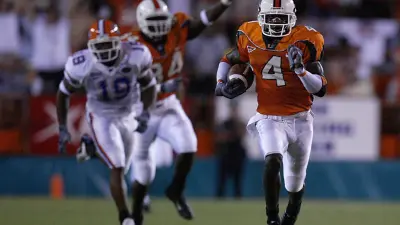Athletes are constantly getting stronger and faster, and they appear to be much more skilled compared to their peers from just a decade or two ago. This isn’t our opinion – it’s a known fact because we see new world records popping up on what seems to be a daily basis. How is this even possible?
The answer to this question hides in sports performance technology.
This shouldn’t surprise you because we keep witnessing the same trend everywhere. Let’s take the Canadian online gambling industry as an example – casino providers in this country reap the benefits of new technologies to come up with better games as well as marketing deals. And this also isn’t our opinion: Regular players who take a look at trusted online casino sites in the Northwest Territories will notice how the overall casino quality drastically improved compared to gambling sites from a few years back.
That’s exactly the case with athlete performance, too. Technology in competitive sports is leaving its mark, and we are going to analyze it in the coming sections.
How Can We Tell That Performance Is Booming?
First of all, allow us to explain that performance optimization tools are really making an impact on professional sports. You can see it yourself whenever you watch a top-level event. Marathon runners are prime examples of how advanced training methods and high-tech sports gear are leading athletes to previously unimaginable heights.
For instance, Eliud Kipchoge became the first man ever to run a sub-two-hour marathon in 2019. He ran in strictly controlled conditions – with pro pacers all around him – while wearing a special version of Nike Vaporfly shoes that are otherwise not allowed. Though unofficial, this race proved what speed training innovations can (and will) do for marathoners. After that, we also saw Kelvin Kiptum breaking the official marathon world record in 2023, while ladies broke their own records twice in 2023 and 2024.
More Sports News
While it is true that all of these athletes are phenomenal runners, marathon records wouldn’t have fallen so quickly without wearable sports tech and advanced shoes that keep speeding up athletes. This is also the main reason why some elite scientists claim that athletes as such aren’t really getting faster, better, and stronger. It’s the technology that makes them better.
Data Analytics in Sports
Bear in mind that modern sports live and breathe data analytics. It’s a genuine revolution because sports scientists and coaches now collect real-time data using all sorts of tools:
– Smart wearables for athletes
– Advanced tracking systems
– Modern computers
– Other types of smart equipment
For example, professional basketball teams use player-tracking systems to monitor everything from sprint speeds to shooting angles. These insights help fine-tune training regimens while making tailored game strategies. Once again, this is pretty similar to what we see in online gambling and bookmaking. In this field, players also rely on data analytics and expert tips in the Saskatchewan gambling guide to figure out what to do in casino games. It feels like everything people do today is based on tech-powered insights that lead to gradual improvements.
The same goes for football. In this sport, analysts dissect almost everything – passing patterns, player positioning, endurance, movement intensity, shot efficiency, and fatigue levels to help managers make substitutions at the perfect moment.
Biomechanics in Athletics: Injury Prevention
Do you know that the regular NBA season involves 82 matches – and that’s without the playoffs? This means that most athletes in the league play a match every 2.5 days on average.
It’s an insane level of intensity that emphasizes the importance of injury prevention. But do you want to know the best thing? NBA players are able to play much more than they used to! Take LeBron James as an example – the guy is still playing top-level basketball in his 40th year.
This has to do with biomechanics and injury prevention. It’s a special area of sports tech that analyzes the overall mechanics of human movement: That way, athletes can achieve peak performance while minimizing the risk of injuries. The idea is to explore how muscles, joints, and skeletal systems interact with each other during physical activities.
In track and field, coaches use biomechanical analysis to refine the running strides of sprinters – this drastically reduces stress on their knees and ankles. They also try and detect improper alignment or uneven force distribution, which makes it possible to come up with specific strength-training exercises.
Longevity Is the New Norm
We already mentioned LeBron James as an example of sports longevity, but that’s not an exception – on the contrary, it has become a new rule. Another example comes from one of the hardest disciplines in the world, aka tennis.
Novak Djokovic shows us how athletes today are rewriting the rules. The greatest tennis player in history is still at the top of his game despite nearing his 40th birthday. This year, Djokovic had only one goal – to win the Olympics Gold – and he did it in a spectacular fashion by defeating a heavy favorite Carlos Alcaraz in straight sets. That way, Novak has proven that age is just a number if you cleverly combine talent with smart training, recovery, and an unwavering mindset.
Final Thoughts: There Seems to Be No Limit for Athletes and Sports Tech
The bottom line is that tech innovations make it possible to prolong athletes’ careers and improve their overall performances. This trend is obvious across all disciplines, and it’s even hard to predict what comes next – we might as well see some decades-old world records broken sooner than later.


















